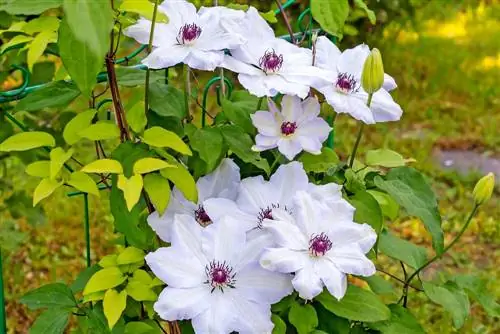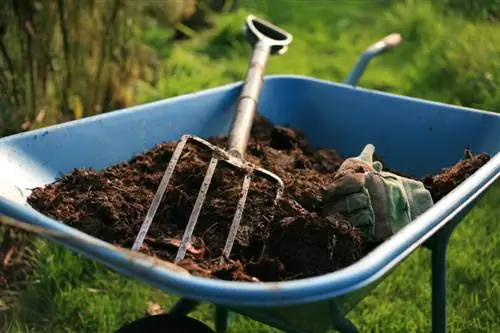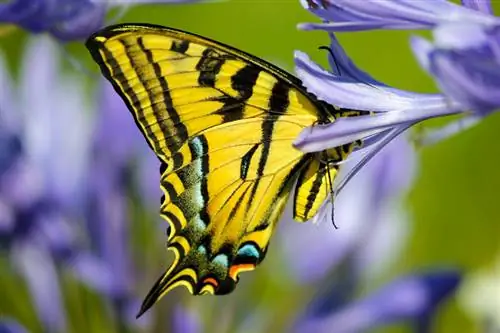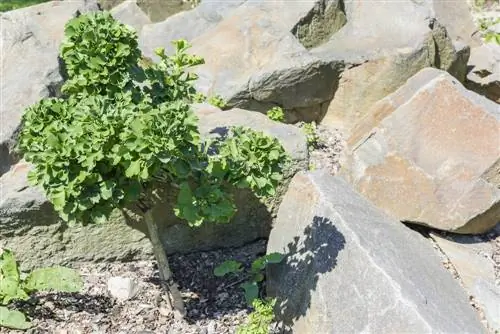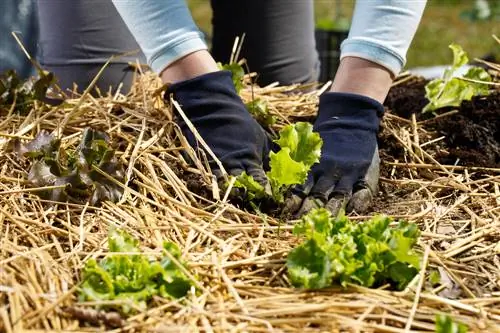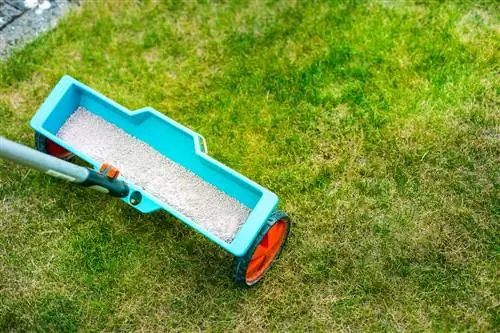- Author admin [email protected].
- Public 2023-12-16 16:46.
- Last modified 2025-01-23 11:20.
Clematis or clematis are particularly popular because of their lush flowers. In order for the climbing plants to open their colorful flowers, they must first be supplied with the right mix of nutrients and in sufficient quantities. This is how you optimally fertilize your clematis.
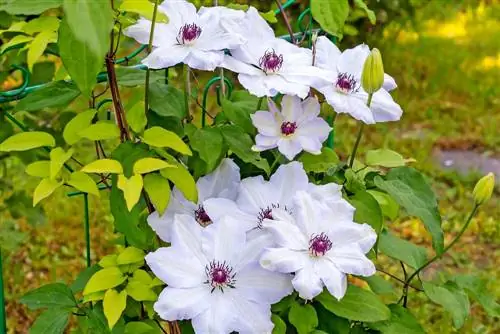
How should you optimally fertilize clematis?
Fertilize clematis in spring with mature compost and horn shavings or meal. A second fertilization in June supports flower formation. For potted plants, use liquid or slow-release fertilizer for flowering plants every two to four weeks. Organic fertilizers are preferable.
When should you fertilize clematis?
Clematis grow very luxuriantly and produce numerous flowers. This takes a lot of energy, which is why you should fertilize the clematis regularly. This schedule applies to organic fertilization: For the first time, provide the plants with the budding shoots in spring in order to strengthen them for the following season. Varieties that bloom several times or for a long time in particular also benefit from a second fertilization in June, which is essential for further flower formation.
You can also provide potted clematis with a liquid fertilizer for flowering plants or with a slow-release fertilizer (e.g. in stick form).
What is the best fertilizer for clematis?
Basically, it is always better to fertilize plants with organic fertilizers. Clematis is no exception. It is better to use ripe compost and horn shavings or horn meal, which contain all the necessary nutrients and at the same time activate soil life. This improves the garden soil sustainably, which also benefits the nutrient supply of your plants. Mineral fertilizer does not have this effect, quite the opposite: if you overdose, you not only harm the plants, but also s alt the soil.
What else should you pay attention to when fertilizing your clematis?
It is particularly important for flowering plants like clematis to fertilize with fertilizers rich in phosphorus, as these stimulate flowering and ensure a rich flower. For example, ripe compost is rich in phosphorus, but also stable manure, such as cattle manure (€22.00 on Amazon). You can also purchase this dried and granulated as a natural fertilizer. Winter hardiness, in turn, is strengthened by fertilizing with potassium, which is contained in home-made comfrey manure. Every now and then a little rock dust, incorporated into the top layer of soil, also supplies the plants with valuable minerals.
How do you properly fertilize clematis in a pot?
Clematis in the pot is particularly dependent on a regular supply of fertilizer. You have the option of supplying the plants with a liquid fertilizer every two to four weeks between April and October or with a slow-release fertilizer every two to three months. Here, too, you should make sure to use special products for flowering plants - these have a higher phosphorus content. Furthermore, it is better to give preference to organic products over mineral ones - the risk of over-fertilization is significantly reduced.
Tip
Can you fertilize clematis with home remedies?
In fact, you can also fertilize the clematis with home remedies. Dried coffee grounds, for example, are very suitable, especially since they also contain a lot of phosphorus and have an acidic pH value - ideal for forest plants such as clematis. However, coffee grounds are not suitable as a sole fertilizer and should only be used as a supplement.

